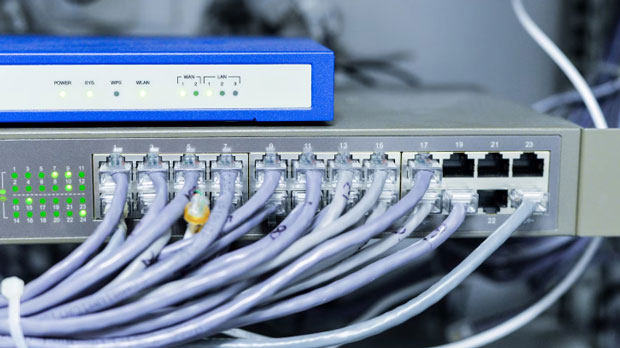What is the difference between a free SOCKS5 proxy and a paid proxy?
When it comes to online privacy and security, socks5 proxies have become an essential tool for many internet users. These proxies allow users to route their internet traffic through a different server, helping to mask their IP address and enhance online anonymity. However, when considering the use of SOCKS5 proxies, users face a choice between free and paid options. While both free and paid SOCKS5 proxies serve the same basic function, they differ significantly in terms of reliability, speed, security, and support. In this article, we will explore the key differences between free SOCKS5 proxies and paid proxies, providing valuable insights for users looking to choose the best option for their needs. Overview of SOCKS5 ProxiesBefore diving into the differences, it is important to understand what SOCKS5 proxies are and how they work. SOCKS5 is a protocol that facilitates internet traffic routing through a proxy server. Unlike traditional HTTP proxies, SOCKS5 proxies do not modify the content of the traffic. This means they support all types of internet traffic, such as HTTP, HTTPS, FTP, and even more specialized protocols. SOCKS5 proxies are often favored for their flexibility and ability to handle various types of data securely. They are widely used for tasks such as accessing geo-restricted content, improving privacy, and masking IP addresses.1. Speed and PerformanceOne of the most significant differences between free and paid SOCKS5 proxies is speed and performance. Free proxies often suffer from slower speeds due to several reasons. First, many free proxy services have limited bandwidth, and when too many users are connected at the same time, the server becomes overloaded, resulting in slow connections. Additionally, free proxies tend to be hosted on servers with outdated hardware or inadequate resources, further contributing to performance issues.On the other hand, paid SOCKS5 proxies typically provide a much faster and more reliable experience. Paid services often have better infrastructure, including high-performance servers, more bandwidth, and higher server availability. This ensures that users experience minimal lag and faster data transfer speeds, which is essential for activities such as streaming, gaming, or secure browsing. Paid proxies also usually have more geographic server locations, allowing users to connect to servers closer to their location for optimal speeds.2. Reliability and UptimeReliability and uptime are critical factors when it comes to choosing a proxy. Free SOCKS5 proxies are notorious for their unreliable nature. These services are often maintained by individuals or small groups with limited resources, meaning the servers may go offline without warning or become unavailable for extended periods. This can disrupt your online activities, making it difficult to rely on free proxies for consistent service.Paid proxies, however, are far more reliable. These services are generally backed by professional teams who manage the infrastructure to ensure high availability. With paid proxies, users can expect better uptime, as the providers invest in robust server infrastructure, regular maintenance, and customer support. Many paid providers offer uptime guarantees, which is crucial for users who rely on proxies for work or business purposes.3. Security and PrivacyWhen it comes to online security and privacy, free SOCKS5 proxies often fall short. Free services may compromise your privacy by logging your online activities or injecting ads into your browsing sessions. Since these proxies are typically offered for free, the providers need to find alternative ways to monetize their services, which may include tracking your activities or selling your data to third parties.In contrast, paid SOCKS5 proxies are typically more secure and privacy-focused. Reputable paid proxy services have strict no-logs policies, meaning they do not track or store any data related to your online activities. Additionally, many paid providers offer enhanced encryption and other security features that protect your data from potential cyber threats. This makes paid proxies a better choice for users who prioritize privacy and security, especially when engaging in sensitive activities like online banking, business transactions, or confidential communications.4. Customer SupportCustomer support is another area where paid SOCKS5 proxies stand out. Free proxy services generally lack reliable customer support, leaving users with no assistance in case of issues or downtime. As these services are typically offered for free, there is little incentive for providers to offer support, and users may have to rely on community forums or self-help guides to troubleshoot problems.Paid proxy services, on the other hand, often provide 24/7 customer support through multiple channels, such as email, live chat, or phone. This is especially important for users who depend on proxies for business or other critical tasks. If something goes wrong, having access to responsive and knowledgeable support can make a significant difference in resolving the issue quickly.5. Geographic Location and IP VarietyFree SOCKS5 proxies usually offer limited geographic locations, with only a few servers available for users to connect to. This can be problematic if you need to access content or websites that are restricted to specific regions. Moreover, since many users share the same free proxies, the IPs assigned to them may become blacklisted or flagged by websites, making it difficult to maintain anonymity or access certain services.In contrast, paid SOCKS5 proxies typically offer a wide range of server locations across multiple countries. This allows users to select the most suitable IP address for their needs, whether it's for accessing region-locked content, bypassing censorship, or maintaining anonymity. Paid proxies also provide a broader range of IP addresses, reducing the risk of encountering blacklisted IPs and improving the overall effectiveness of the proxy service.6. Cost and ValueThe most obvious difference between free and paid SOCKS5 proxies is the cost. Free proxies are, of course, free, but this comes with the trade-off of having to accept lower performance, less security, and more restrictions. For occasional or casual use, free proxies might be acceptable, but for users who require a more reliable, fast, and secure experience, the investment in a paid proxy service can be well worth it.Paid SOCKS5 proxies come with a subscription fee, but they offer significant value in return. The cost generally reflects the quality of service, with paid providers offering high-speed connections, strong security features, diverse server locations, and reliable customer support. When considering the long-term benefits, paid proxies can provide better performance and peace of mind, making them a more cost-effective solution for frequent users.ConclusionIn conclusion, while both free and paid SOCKS5 proxies serve the same basic function, they differ greatly in terms of speed, reliability, security, support, and overall value. Free proxies may be suitable for occasional or non-critical use, but for users who require consistent performance, enhanced privacy, and reliable customer support, paid proxies are the better option. Ultimately, choosing between free and paid SOCKS5 proxies depends on your specific needs, but for those looking for a professional and secure solution, paid proxies are the way to go.
2025-01-15

























































